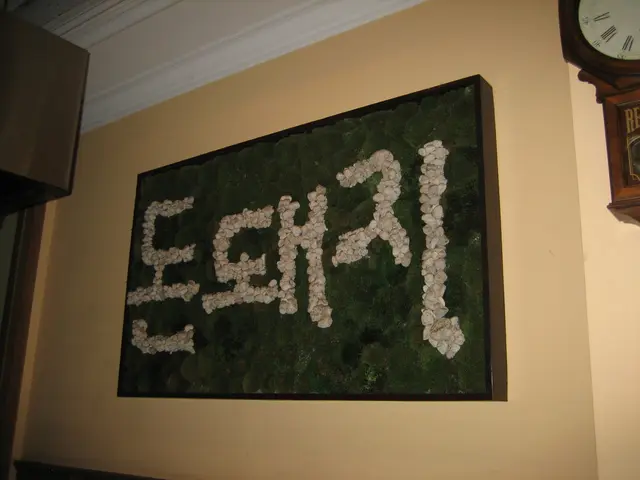Seven garden design principles that can be disregarded, yet the one principle that mustn't be disregarded:
Garden design is full of hard-and-fast rules, like planting tall plants at the back of the border or always having a lawn if you have kids. But if you're looking to create a unique, engaging, and eco-friendly garden, it's time to think outside the box. Here are seven garden design rules that experts say you can break with confidence.
1. A Lawn? Not Necessarily
Many of us believe that kids need a lawn to play on, but there are plenty of alternatives that offer more sustainability and fun. London-based garden designer Tom Massey often transforms family gardens with playful, immersive planting schemes, rain gardens, and wild patches. "A flat patch of turf is the least engaging and ecologically generous solution," he says. Camellia Taylor of The Garden Taylor agrees, suggesting naturalistic planting, landforms, or mini meadows with mown paths for children to explore.
2. Tall Plants Don't Always Belong at the Back
Mixing heights throughout a border can bring a more dynamic and immersive experience, says Sussex-based landscape designer Joe Perkins. "A mown path by tall umbrifers that brush against you as you pass can bring the garden to life," he adds. Tom Massey believes that allowing taller species to weave through a scheme adds moments of surprise and depth.
3. You Don't Always Need to Plant in Groups of Three or Five
The idea that plants grow in nature in groups of odd numbers might make sense on paper, but garden designer Richard Miers thinks we shouldn't get too hung up on it. "I can do a group of one or four depending on the space available," he says. Darryl Moore prefers to focus on creating layers of ground cover, perennials, shrubs, and trees based on site conditions.
4. The Patio Doesn't Always Need to be Right Outside the Back Door
While a dining table and chairs immediately outside the back door might seem convenient, it can end up looking ridiculous, says garden designer Charlotte Rowe. Instead, choose a spot with the right sunlight and consider placing plants, shrubs, or small trees right up against the house for a softer, more inviting look.
5. A Year-Round 'Wow' Factor Isn't Necessary (or Desirable)
Garden design courses often emphasize the need for year-round interest, but Marian Boswall argues that planning a garden around the natural rhythms of nature creates a more restful and rewarding space. "Each nuance of texture, tiny shape, and drop of subtle color becomes a focus of a softer gaze," she says.
6. Your Garden Doesn't Need to be Symmetrical
Asymmetry can be more effective, says Tom Massey. "Strong structure and axial design can feel imposed, whereas asymmetry tends to create more dynamic and natural-feeling gardens." Landscape designer Hugo Bugg suggests using organic, free-form curves for a more intuitive and connected feel.
7. You Don't Always Need One-third Hard Landscaping
The 30-70 hard-to-soft landscaping ratio is a common rule, but garden designer Catriona Rowbotham believes it can be misleading. In town gardens, hard landscaping may dominate, while in large country gardens, soft landscaping will. Instead, focus on working planting design into permeable materials and using them judiciously to save costs and promote sustainability.
The One Rule You Should Never Break: Keep it Simple
When working with clients, keep in mind that less is often more. Don't try to cram too much into your garden. Instead, design a journey that will draw people out into the garden and encourage exploration and discovery. Focus on atmosphere, emotion, and sense of place, then add paths, client requirements, and functional elements as needed.
Alternative Garden Designs for Kids
Don't forget that there are plenty of alternatives to traditional lawns that can be engaging, eco-friendly, and fun for kids. Here are some ideas:
- Patio or outdoor rooms: Replace sections of lawn with patios, decking, or paved areas fitted with outdoor furniture. This creates inviting spaces for play, relaxation, and socializing while reducing mowing and watering needs.
- Mulched play areas: Use wood chips or mulch for play spaces. These are soft underfoot for children, require minimal upkeep, and can be shaped around trees, swings, or sandpits.
- Gravel and rock gardens: Incorporate gravel, pebbles, or decorative rocks combined with drought-tolerant plants. This is low-maintenance, reduces water use, and can include paths or stepping stones for exploration.
- Native plantings and meadows: Replace lawn with native grasses, wildflowers, or meadow-style plantings. These support local wildlife, require less maintenance, and can be designed with pathways for children to wander and discover.
- Edible gardens: Integrate vegetable beds, fruit trees, or herb spirals. These encourage hands-on learning and healthy eating while adding greenery and variety.
- No-mow ground covers: Use dense, low-growing plants like clover, creeping thyme, or sedges. These are soft, resilient, and require minimal mowing or fertilizing.
- Xeriscaping: Design with drought-tolerant plants, rocks, and mulch to lower water use. This approach is especially effective in dry climates and can be visually striking and sustainable.
By breaking these seven garden design rules and incorporating alternative, sustainable, and engaging elements, you'll create a garden that's truly unique and appealing to both children and adults alike, while supporting the local ecosystem.
- Garden designers like Tom Massey and Camellia Taylor advocate for using alternative solutions instead of traditional lawns, suggesting playful, immersive planting schemes, rain gardens, and wild patches for a more sustainable and engaging environment.
- Sussex-based landscape designer Joe Perkins prefers mixing heights throughout a border, enhancing the overall dynamic and immersive experience by creating a mown path amongst tall umbrifers that brush against passersby.
- Garden designer Richard Miers believes that plant arrangements should not be confined to groups of odd numbers, as he can create groups of one or four depending on the space available and site conditions.
- Garden designer Charlotte Rowe advises against placing the patio immediately outside the back door, suggesting a spot with optimal sunlight and a softer, more inviting look by placing plants, shrubs, or small trees right up against the house.
- Rather than prioritizing a year-round 'wow' factor, Marian Boswall suggests planning a garden around natural rhythms of nature for a more restful and rewarding space, allowing subtle drops of color to become a focus of a softer gaze.
- Asymmetry can create more dynamic and natural-feeling gardens, according to Tom Massey, who prefers organic, free-form curves over strong, imposed symmetrical designs.
- Rather than adhering to the 30-70 hard-to-soft landscaping ratio, garden designer Catriona Rowbotham recommends focusing on integrating planting design into permeable materials, using them judiciously to save costs and promote sustainability.
In addition, alternative garden designs for kids can include patio or outdoor rooms, mulched play areas, gravel and rock gardens, native plantings and meadows, edible gardens, no-mow ground covers, and xeriscaping, all of which support local wildlife, reduce maintenance, and encourage exploration and hands-on learning. By breaking these rules, gardeners can create unique, appealing, eco-friendly spaces for both children and adults alike.




